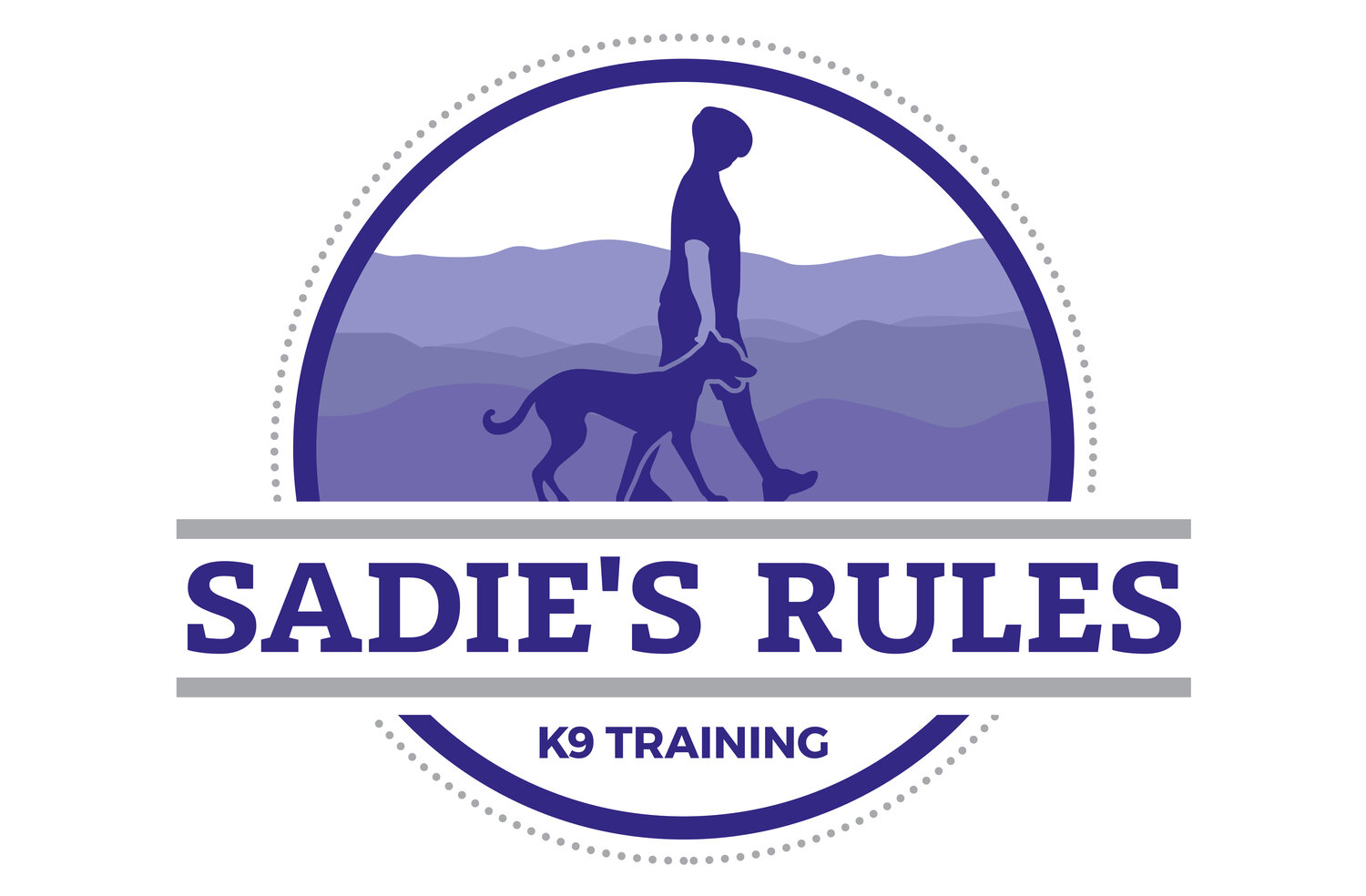I don’t teach the words “stay” or “wait” but I do teach those concepts. The concepts of stay and wait are built into the skills, manners, attitude, and dog-handler relationship that we develop throughout the board & train program. It’s not necessary to name and teach them as separate concepts; in fact, that can become more of a hindrance than a help. Have you ever told your dog to “Waiiiiit… Waiiiiiit….” and watched his excitement and anticipation grow? Treating concepts like staying and waiting as individual commands too often pairs them with the wrong state of mind (excitement, anticipation) instead of the cool, calm, collected state of mind we’re looking for. Let’s unpack this.
The implied stay
Sit always means “sit and stay”.
Most dogs come to my board & train program knowing many of their basic commands (sit, down, come) including “stay” as a separate command, but their understanding of these commands is shallow. It looks something like this: I say “sit” and if I’m holding food or if the dog finds me particularly interesting he might sit for a second, but then he pops back up again. Serious question: what good is that? How is a sit helpful without stay? I teach stay as an implied concept because that’s what makes the stationary commands (sit, down, place) practical. Sit, down and place always mean “until further notice”—i.e. “Stay.” When we’re teaching obedience for practical purposes, “stay” is completely unnecessary.
The concept of wait
Wait is also an implied or built-in concept. When I open up the front door, I don’t instruct the dog to wait; I expect it. We teach the dogs to wait for our permission to cross the threshold not by adding a word, but by setting firm boundaries and building a leader-follower relationship. This is part of how we teach dogs to make better decisions for themselves instead of being completely dependent upon human guidance. (Don’t get me wrong, dogs will always need human guidance overall, but there are many instances where they can learn to make better choices all on their own.) Everything is permission-based, so everything involves waiting. There’s never a need to say “wait.”
Waiting is also a constant occurrence during training because it’s one way we begin to address the dog’s state of mind. Most dogs are super amped up—some from excitability and hyperactivity, some from nervousness or fear, etc.—but dogs don’t make very good decisions when they’re in an elevated state of mind. We teach them to calm down and think through their behavior, and doing things slow and steady is one way we accomplish this. During the board and train, dogs wait for permission to cross thresholds (outside doors, crate doors, car doors, etc.), they wait for permission to break commands (sit, down, place), they wait for permission to eat, etc. There’s never a need to say it, but that’s what’s happening.
The problem with teaching “wait” and “stay” commands
The problem with teaching “wait” and “stay” as separate commands is that the dog doesn’t get the leadership and state of mind benefits that you’d get if they were implied. These two factors—leadership and state of mind—have massive impacts on a dog’s behavior, so this is no small thing! The other problem with teaching separate wait and stay commands is that the stationary commands you’re teaching (sit, down, place) have no practical value—literally none. Without the “stay” part, they’re just tricks. For best results, teach stay and wait as implied concepts: build stay into your stationary commands and build wait into your interactions with the dog across many contexts.


